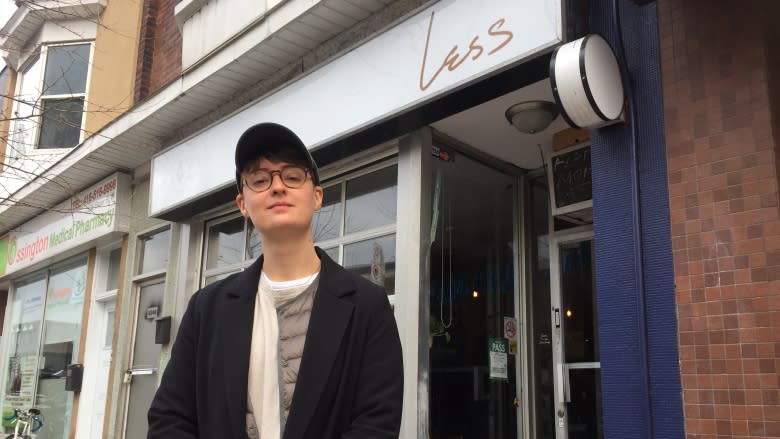With help from a new toolkit, Toronto bar readies itself for a possible opioid overdose
During its brief two months in business, Toronto's Less Bar hasn't experienced the misfortune of an opioid overdose, but the bar's manager says her staff will be ready if one ever happens.
"I feel confident that we would do everything in our power to prevent an overdose," said general manager Carmen Elle. "And because we have the kits, that's infinitely more possible for us."
On Monday, the Bloor Street bar became the first business in Toronto to implement an opioid and overdose plan prescribed in a new toolkit from the Canadian Mental Health Association (CMHA).
In addition to information on the ongoing opioid crisis, the kit lays out protocols designed to help an organization swiftly respond to an overdose by administering the potentially life-saving drug naloxone, which can temporarily reverse the effects of an overdose.
The possibility of an overdose is becoming increasingly likely according to the latest CMHA statistics. In 2016, Ontario saw 865 opioid-related deaths, or approximately one every 10 hours.
"We need to begin to normalize the conversation about how as a society we start to deal with overdose and death prevention," said Camille Quenneville, CEO for the CMHA in Ontario.
Administering naloxone
The CMHA toolkit is intended to be used in conjunction with naloxone kits, which are now available at pharmacies and public health organizations.
If administered in time, the drug can help an overdosing person breathe and even jolt them back into consciousness, buying precious moments before the need for emergency medical intervention.
"We're encouraging all public organizations to make it available in their premises so that we can begin to save lives," said Quenneville of the naloxone kits.
However, the CMHA says awareness of naloxone is low and few people know how to use it in an emergency.
"I'm not sure people really know what naloxone is, or what they would do in the event of an overdose," Quenneville added.
Elle said that's now changed among her staff, who today know how to deliver the drug via an EpiPen-like injector or a nasal spray.
In addition to the possibility of saving a life, she says the knowledge of how to use the drug has helped her staff gain a semblance of control in the face of the daunting crisis.
"People are scared and feeling kind of disempowered to help solve the crisis, which is why the naloxone kit is so good," she said.



